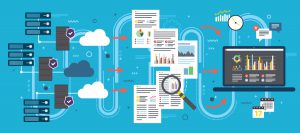The huge influx of customer data at any given point is an undisputable fact of this digital transformation era. The changing customer intelligence landscape and increase in online customer interactions have led brands to rely on Customer Data Platforms (CDPs). It helps them to assess and understand customers’ digital activities in real-time and up their game of achieving better customer delight.
Table of Contents
The Surge in the demand for CDP
The last two years saw incremental growth in the demand for CDP. The global customer data platform market size has shown YoY compound growth and is expected to grow from USD 15.3 billion in 2021 to a CAGR of 34.6% in 2026. The Pandemic also bolstered the growth of CDPs. It forced people to adopt digital solutions, and even the industries not relying heavily on tech like local grocery stores, and pharmacies had to go digital. The increase in digital interactions and the proliferation of different digital channels are the two major factors that pushed brands to increase their budget for advertising and marketing. Besides the need to provide a better shopping experience to the customers and achieve customer delight has resulted in growth of CDP platforms.
Why brands need CDP and its benefits
Brands understand that customer journeys have become more nuanced and are no longer linear, and it has become hard for them to measure customer experience which has a long-term impact in terms of satisfaction and loyalty. CDP helps brands to navigate a ‘buyer’s journey to purchase’ that covers multiple touchpoints and interactions. The regular switch of a buyer from a product page to social media to blogs to the virtual marketplace – the trail that a customer leaves behind is quite diverse, and CDPs enable brands to collect data from multiple touchpoints and create a unified customer view that helps them to serve them better.
Through CDPs, brands can collect the data generated from various channels, devices and discover actionable insights from the data in real-time. One may think when there are already systems like Data warehouses, data lakes, Data Management Platforms (DPM), Customer Relationship Management tools, and Marketing Automation Platforms why does one need a CRM? While these tools help in collecting data from disparate systems, they don’t have the capabilities to unify and organize a single view of customer data. Moreover, most companies have data available in disparate systems and siloed across organizations, in scenarios like this, marketers won’t be able to engage with the customer in an apt manner quickly. They are totally dependent on their data scientists and analysts to gather data from siloed systems, disparate sources, and different channels to get a total (complete) view of a customer’s activities. As simple as it may sound, this process can be quite challenging and time-consuming, and even after the repositories are created there is a dependency on data teams for customer segmentations, understanding of customer channel preferences and response rates, frequency analysis of interactions for building suppression rules, assessing customer journey analysis to mine insights and lastly executing lookalike modeling to tap untapped audience with similar preferences.
Moreover, companies are looking for platforms that help them provide insights in real-time and offer better-personalized customer services.

Every customer has a different way to engage with the brands and every customer’s digital footprint is diverse, CDPs equip brands to make the switch from mass communication to personalized one at the right time and offer better services. In fact, as per the trends, Customer service has taken a central stage and customers are willing to spend more for quality services. As per the Local Consumer Review Survey 2022 – Customer-centric companies are 60% more profitable than companies that neglect, and compromise on customer service/satisfaction.
CDPs benefit organizations by serving their customers in a better way and offering services at a time when they need them which in turn will help them in achieving customer loyalty. It has several use cases and benefits for sales, marketing, and customer services (after-sales services). Some of the key use cases include – personalized offerings & communications, marketing automation, social media listening, predictive analytics, recommendation engines, control or retargeting, and real-time predictive insights.
Introducing Piper – A 360-degree Smart Customer Data Intelligence Platform
Piper is our 360-degree customer data intelligence platform that gathers customer data from multiple channels to present a unified view of a customer. It integrates multiple data sources & stitches customer data to provide a ‘single source of truth.’ It enables organizations and departments to provide consistent customer experience across multiple channels. It provides quality predictable insights to push appropriate products, offers, recommendations, personalized communications, and quality customer experience. Whether it is improving customer loyalty by identifying and responding to “customer moments of truth” or providing personalized experiences, Piper helps in improving customer life cycle value by presenting a unified view and key insights in real-time. It helps in crafting better customer experiences and offers better segmented and higher quality customer interactions. It provides transparency, and insights and allows teams to react quickly and change their strategy when course correction is required, and it equips them to understand and improve their revenue and Return on Ad Spend (ROAS).
Piper enables a luxury car manufacturer to improve their after-sales services and create a better omnichannel experience
Our client is one of the world’s leading manufacturers of premium cars. They were struggling in understanding customer sentiment and wanted to provide a better omnichannel customer experience. Their main problem was managing a high volume of customer data and drawing insights from it. This data was stored in silos and management didn’t have a unified view of each function. To top it, the data silos created multiple sources of information and data security and scalability had become a challenge.
They didn’t have a complete picture of customer data and persona-based reporting and mapping were missing. They were unable to utilize predictive analytics to forecast trends and offer better deals to customers.
To overcome this challenge, we provided a modern data platform and solution stack – Motherson MOTIF. We began with transforming the data landscape by redesigning and migrating their legacy process to a robust warehouse management system and upgrading the data lake to assimilate data from various touchpoints and cleansing the data to mine insights for better customer deliverables, proper visualization for effective data governance.
By utilizing MOTIF – Piper, we have helped them to get a holistic view of customer activities to offer customers seamless omnichannel experiences and enabled them to keep their customers updated on additional services, exclusive -personalized offers, etc.
By implementing MOTIF Lakehouse and Piper, the client achieved these outcomes:
- A complete view of each function with a 360 analytical dashboard providing critical insights and improving efficiency
- A better understanding of customers for creating better, personalized, authentic experiences
- Establishing a data mindset with effective data generation and sharing. Enabling effective data exchange within the departments to make every customer interaction count.
Wrapping Up
In this unprecedented digital age, a humungous amount of data generated, and the influx of new digital channels for communications make it difficult for brands to delight customers and gain their undivided attention daily. In desperate times like this where brands are struggling to gain customer attention, quality customer analytics allows brands to improve their relationships with customers. Our product Piper was conceived for brands striving to achieve customer-centricity and provide better customer services. We would love to know how you are faring in your journey to achieve customer delight and help you achieve it. Write to me at Hariharan.ramakrishnan@motherson.com to begin a conversation.
About the Author:

Hariharan Ramakrishnan leads the Digital and Analytics services at Motherson Technology Services. A multi-disciplinary business leader with 20 plus years of experience in the digital transformation space, he is instrumental in helping enterprises evolve their digital strategy to enhance their revenues whilst improving customer experience, and optimising cost. A frequent speaker at industry & technology forums, he continues to author various thought leading articles on technology related trends.















































